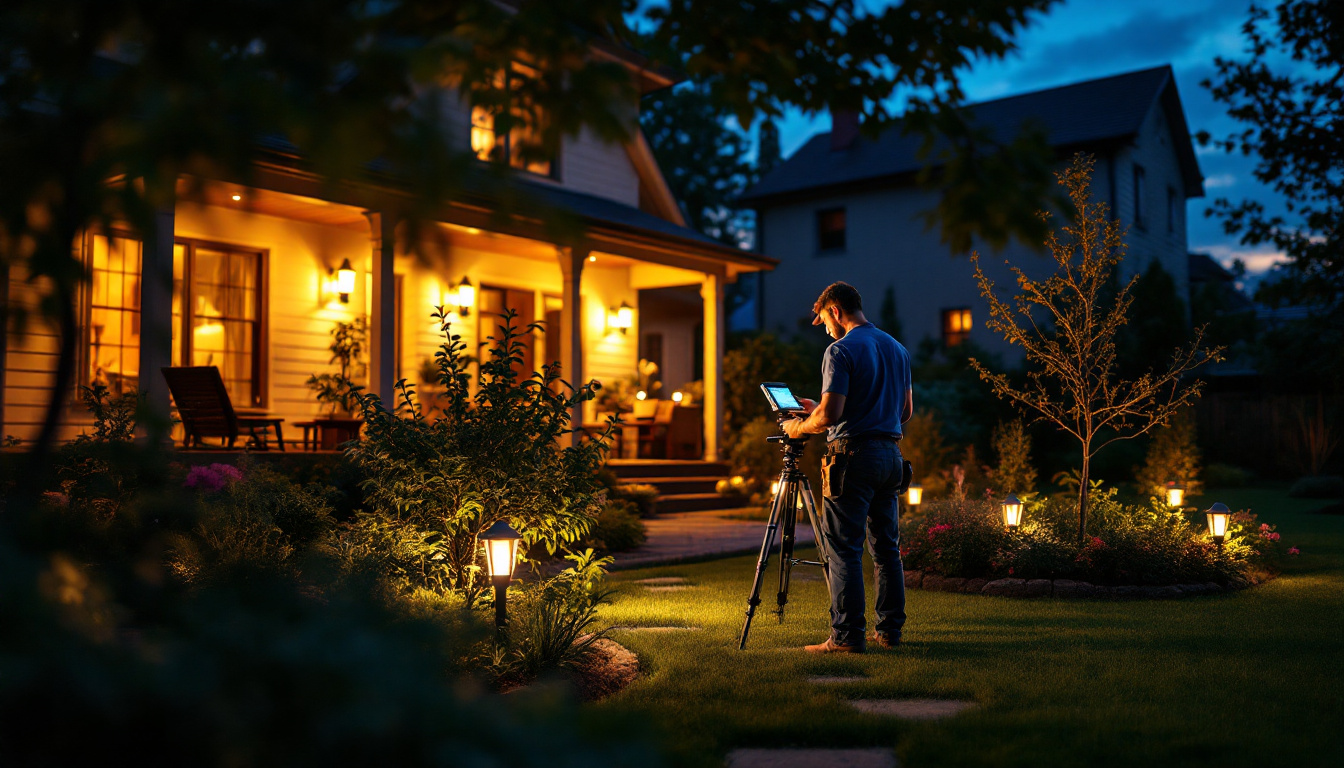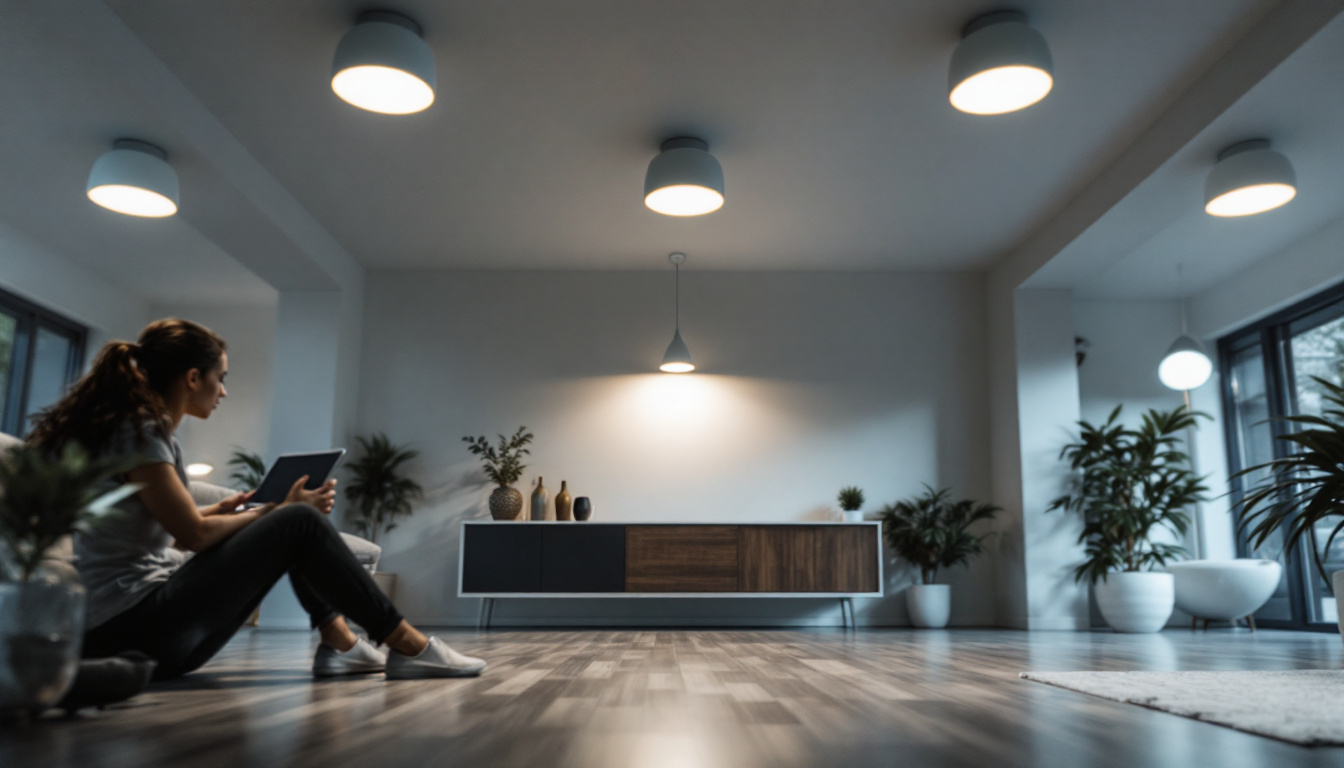
In the ever-evolving world of lighting technology, LED lamps with remote controls have emerged as a popular choice among lighting contractors. These innovative lighting solutions offer a range of features that can enhance both functionality and aesthetics in various settings. However, like any technology, they come with their own set of advantages and disadvantages. This article delves into the pros and cons of LED lamps with remote controls, providing insights that can help lighting contractors make informed decisions for their projects.
Before diving into the specifics of LED lamps with remote controls, it’s essential to understand the underlying technology. LED, or Light Emitting Diode, represents a significant advancement over traditional incandescent and fluorescent lighting. LEDs are known for their energy efficiency, longevity, and versatility. They emit light when an electric current passes through a semiconductor material, producing minimal heat compared to other lighting options.
This technology has transformed the lighting industry, making LEDs the go-to choice for contractors looking to provide sustainable and cost-effective solutions. The integration of remote controls adds another layer of convenience and functionality, making these lamps even more appealing for various applications.
One of the standout features of LED technology is its ability to produce a wide spectrum of colors without the need for filters. This capability allows for creative lighting designs that can enhance the ambiance of any space, whether it be a cozy living room or a vibrant office environment. Moreover, LEDs can be dimmed and adjusted to suit different moods and activities, providing users with greater control over their lighting experience. The longevity of LEDs, often lasting up to 25,000 hours or more, means that consumers can enjoy significant savings on replacement costs and maintenance, further solidifying their popularity in both residential and commercial settings.
Additionally, the environmental impact of LED lighting cannot be overlooked. Unlike traditional bulbs, LEDs do not contain harmful substances such as mercury, making them a safer choice for both users and the planet. Their low energy consumption translates to reduced greenhouse gas emissions, contributing to a more sustainable future. As smart home technology continues to evolve, the combination of LED lights with remote controls and smart devices allows for seamless integration into home automation systems, enabling users to control their lighting from anywhere, at any time, enhancing both convenience and energy efficiency.
One of the most significant benefits of LED lamps with remote controls is the convenience they offer. Contractors can easily adjust the lighting settings from a distance, eliminating the need to manually switch lights on and off or adjust brightness levels. This feature is particularly beneficial in large spaces or hard-to-reach areas, where accessing light fixtures can be cumbersome.
Moreover, remote-controlled LED lamps often come with programmable settings, allowing users to create customized lighting schedules. This capability can enhance energy savings by ensuring lights are only on when needed, making it an attractive option for both residential and commercial projects.
Energy efficiency is a hallmark of LED technology, and when combined with remote controls, this efficiency is further amplified. LED lamps consume significantly less energy than traditional lighting options, which translates to lower electricity bills for clients. The ability to control lighting remotely allows for precise management of energy use, ensuring that lights are not left on unnecessarily.
For lighting contractors, promoting energy-efficient solutions is not only beneficial for clients but also aligns with sustainability goals. Many clients are increasingly seeking eco-friendly options, making LED lamps with remote controls an attractive selling point.
LED lamps with remote controls come in a variety of styles and designs, making them suitable for a wide range of applications. From residential homes to commercial spaces, these lamps can be integrated into various lighting schemes. The ability to change colors, adjust brightness, and set different modes (like dimming or flashing) allows for creative lighting solutions that can enhance the ambiance of any space.
This versatility is particularly advantageous for lighting contractors working on diverse projects. Whether it’s a cozy living room or a vibrant retail environment, remote-controlled LED lamps can meet the specific needs of each client, providing tailored solutions that stand out.
While the long-term savings associated with LED lamps are substantial, the initial cost can be a deterrent for some clients. LED lamps with remote controls tend to be more expensive than traditional lighting options, which can impact budget-conscious projects. Lighting contractors must weigh the upfront investment against the potential savings in energy costs over time.
It’s essential to communicate the value of these lamps to clients, emphasizing the longevity and efficiency that can offset the initial expenditure. Providing a clear breakdown of potential savings can help clients see the bigger picture and make informed decisions.
As with any technology, reliance on remote controls can pose challenges. If the remote is lost or malfunctions, users may find themselves unable to control the lighting as intended. Additionally, some clients may not be comfortable using remote controls or may prefer traditional switches, which can lead to frustration.
Lighting contractors should consider these factors when recommending LED lamps with remote controls. Offering training or user-friendly solutions can help mitigate these concerns and ensure that clients feel confident in using their new lighting systems.
Another potential drawback of LED lamps with remote controls is compatibility with existing systems. In some cases, integrating these lamps into older electrical setups may require additional modifications or upgrades. This can lead to increased installation costs and time, which may not be ideal for all projects.
Contractors should conduct thorough assessments of the existing electrical infrastructure before recommending LED lamps with remote controls. Understanding the compatibility of these systems can help avoid unexpected challenges during installation and ensure a smoother process for both contractors and clients.
In residential settings, LED lamps with remote controls can significantly enhance the quality of lighting. Homeowners can easily adjust the ambiance of their living spaces, creating the perfect atmosphere for different occasions. Whether it’s a cozy movie night or an elegant dinner party, the ability to change colors and brightness levels adds a layer of sophistication to home lighting.
Additionally, these lamps can be integrated into smart home systems, allowing for seamless control through smartphones or voice-activated devices. This integration is increasingly appealing to tech-savvy homeowners looking to modernize their living spaces.
In commercial environments, the versatility of LED lamps with remote controls can be leveraged to create dynamic lighting solutions. Retailers can adjust lighting to highlight products, set the mood for customers, or even create themed displays. Restaurants can use remote-controlled lighting to enhance the dining experience, adjusting brightness and color to match the time of day or special events.
Moreover, the energy efficiency of LED lamps can lead to significant cost savings for businesses, making them an attractive option for commercial contractors. Clients are often eager to invest in solutions that can improve their bottom line while enhancing the overall customer experience.
Outdoor applications for LED lamps with remote controls are also gaining popularity. Landscape lighting, security lighting, and patio lights can all benefit from the flexibility and convenience offered by remote controls. Homeowners can easily adjust outdoor lighting to create inviting spaces for gatherings or enhance security by illuminating pathways and entry points.
For contractors, outdoor installations present unique challenges, such as weather resistance and durability. Choosing high-quality LED lamps with remote controls designed for outdoor use can ensure longevity and performance, making them a reliable choice for various outdoor lighting projects.
One of the most effective ways to promote LED lamps with remote controls is through education. Lighting contractors should take the time to explain the benefits and features of these products to clients. Providing demonstrations or showcasing successful installations can help clients visualize how these lamps can enhance their spaces.
Additionally, addressing any concerns or misconceptions about remote controls can help clients feel more comfortable with the technology. Offering guidance on how to use and maintain the systems can further enhance their experience and satisfaction.
The lighting industry is continually evolving, with new technologies and products emerging regularly. Lighting contractors should stay informed about the latest advancements in LED technology and remote control systems. This knowledge will enable contractors to provide clients with the most current and effective solutions available.
Attending industry trade shows, participating in training sessions, and networking with other professionals can help contractors stay ahead of the curve and offer the best options to their clients.
When recommending LED lamps with remote controls, lighting contractors should consider offering comprehensive solutions that include installation, maintenance, and support. Providing a complete package can enhance the client experience and build trust in the contractor’s expertise.
Additionally, offering follow-up services, such as troubleshooting or upgrades, can help maintain long-term relationships with clients and encourage repeat business. A commitment to customer satisfaction can set contractors apart in a competitive market.
LED lamps with remote controls present a range of advantages and disadvantages for lighting contractors. While they offer enhanced convenience, energy efficiency, and design versatility, considerations such as initial costs, reliance on technology, and compatibility issues must be addressed. Understanding the applications of these lamps in residential, commercial, and outdoor settings can help contractors make informed recommendations to clients.
By educating clients, staying updated on technology, and offering comprehensive solutions, lighting contractors can effectively navigate the pros and cons of LED lamps with remote controls. Ultimately, these innovative lighting solutions can enhance the quality of lighting projects, providing both contractors and clients with a modern approach to illumination.
Ready to elevate your lighting projects with the cutting-edge advantages of LED lamps with remote controls? Look no further than LumenWholesale, where we provide lighting contractors with the highest quality, spec-grade lighting products at unmatched wholesale prices. Say goodbye to local distributor markups and hello to our extensive selection that meets rigorous industry standards. With LumenWholesale, you can count on reliable, high-performance lighting that brings your projects to life. Plus, enjoy the convenience of bulk buying with free shipping, ensuring you get the best value without any hidden costs. Wholesale Lighting at the Best Value is just a click away. Transform your lighting solutions today with LumenWholesale.

Discover the key factors that distinguish top lighting contractors in the solar path lighting LED industry.

Discover essential tips and expert insights for lighting contractors to master the art of installing flood lights outdoors.

Discover how modern can lights are revolutionizing the lighting industry by offering cost-effective solutions for contractors.

Discover the top five reasons why lighting contractors should prioritize different types of fluorescent lights.